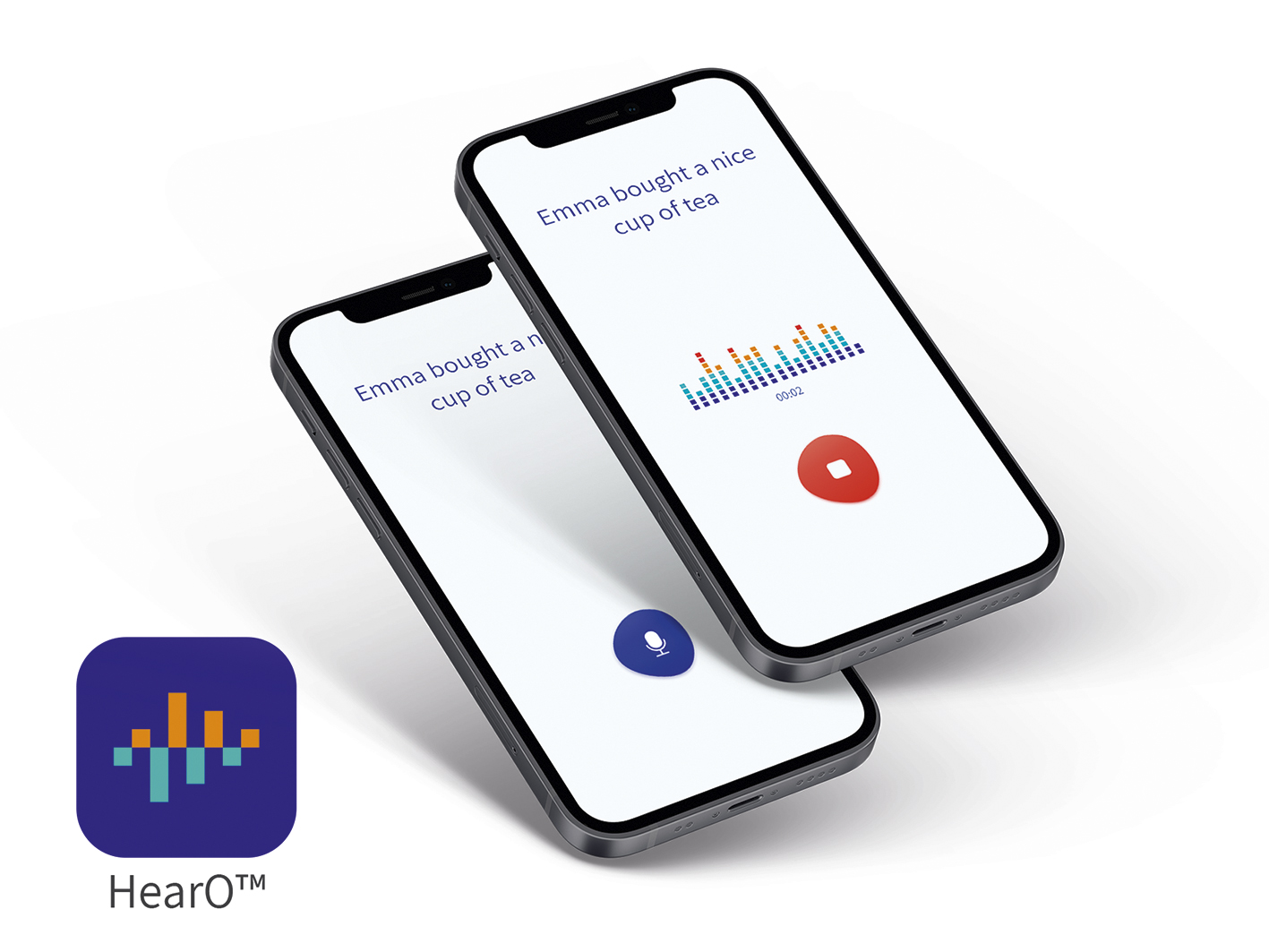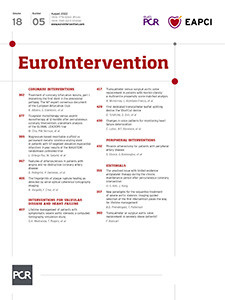
Figure 1. HearO application.
Heart failure (HF) affects >6 million adults in the United States1 and 26 million worldwide2, at a cost of over $30 billion in the United States alone3. Pulmonary congestion is the predominant factor leading to hospitalisation for HF patients, and also is a major contributor to poor outcomes after hospital discharge. A need exists for a simple, non-invasive approach to detecting worsening pulmonary congestion at an early stage for the management of HF patients. In the context of pulmonary congestion, it has been proposed that the fluid overload may be detected by distinctly altered phonation patterns. A novel speaker verification and speech processing technology has been developed that uses a proprietary smartphone application (HearO, Cordio Medical). The speech analysis is based on the paradigm of text-dependent speaker verification. The premise behind the HearO system is that subtle physiological changes associated with HF decompensation affect the patient’s speech, producing a different voiceprint. These changes are much more subtle than those found between different speakers but are nonetheless detectable using algorithms derived from those used in text-dependent speaker verification (Figure 1).
To evaluate whether distinct speech measures reflect different clinical states of pulmonary congestion, two single-arm, open label, non-invasive studies were undertaken to analyse speech recordings of HF patients, one in hospitalised patients with acute decompensated HF (ADHF) and one in ADHF patients undergoing haemodialysis (a model which represents a fluid-controlled environment).
Patients hospitalised for ADHF consistent with pulmonary congestion were studied4. Forty-seven patients were enrolled, and approximately 40 recordings were obtained from each patient, resulting in a total of 1,728 recordings. Recordings were analysed for 5 chosen distinct HearO speech measures (SM). Interpatient comparisons of collected recordings identified significant differences in all 5 tested SM of both clinical states, wet (admission) vs dry (discharge); p<0.0001, showing a mean percentage change from baseline ranging from 49% to 200%.
In another study, five patients with congestive HF undergoing haemodialysis three times per week for 3 months were studied5. A total of 472 speech recordings (mean 94.4 per patient) were analysed. Mean baseline (predialysis) speech measures increased by approximately 23% by the end of the dialysis session and remained at a similar level until the following morning. By the day after dialysis, mean speech measures had returned to predialysis levels (just before the next dialysis cycle). The results also showed a significant (p=0.04) difference between median speech measures immediately before versus after dialysis, and a significant (p=0.007) difference versus those obtained the following morning.
These two studies were able to identify voice alterations, reflective of changes in HF clinical status (wet vs dry), among patients with ADHF and in chronic congestive HF patients undergoing haemodialysis, with a significant shift toward improvement and return to baseline between all dialysis cycles. This innovative approach assessing HF may provide a new tool for in-hospital and remote monitoring of pulmonary congestion in HF patients. If validated in additional studies, this speech-based analysis could provide a simple non-invasive approach to the remote monitoring and management of patients with HF.
Acknowledgements
The authors would like to acknowledge the assistance of Richard Perry in the preparation of this manuscript, which was supported by Cordio Medical.
Conflict of interest statement
O. Amir is a paid consultant for Cordio Medical Ltd.; W. T. Abraham has received consulting fees from Abbott, Boehringer Ingelheim, CVRx, Edwards Lifesciences, and Respicardia; salary support from V-Wave Medical and research support from the U.S. National Institutes of Health/National Heart, Lung, and Blood Institute. I. Shallom is the Chief Technology Officer of Cordio Medical. C. Lotan is a board member of Cordio Medical and has received lectures fees from Boehringer Ingelheim. R. Haviv is the Senior Vice President Clinical and Regulation at Cordio Medical.
Supplementary data
To read the full content of this article, please download the PDF.

